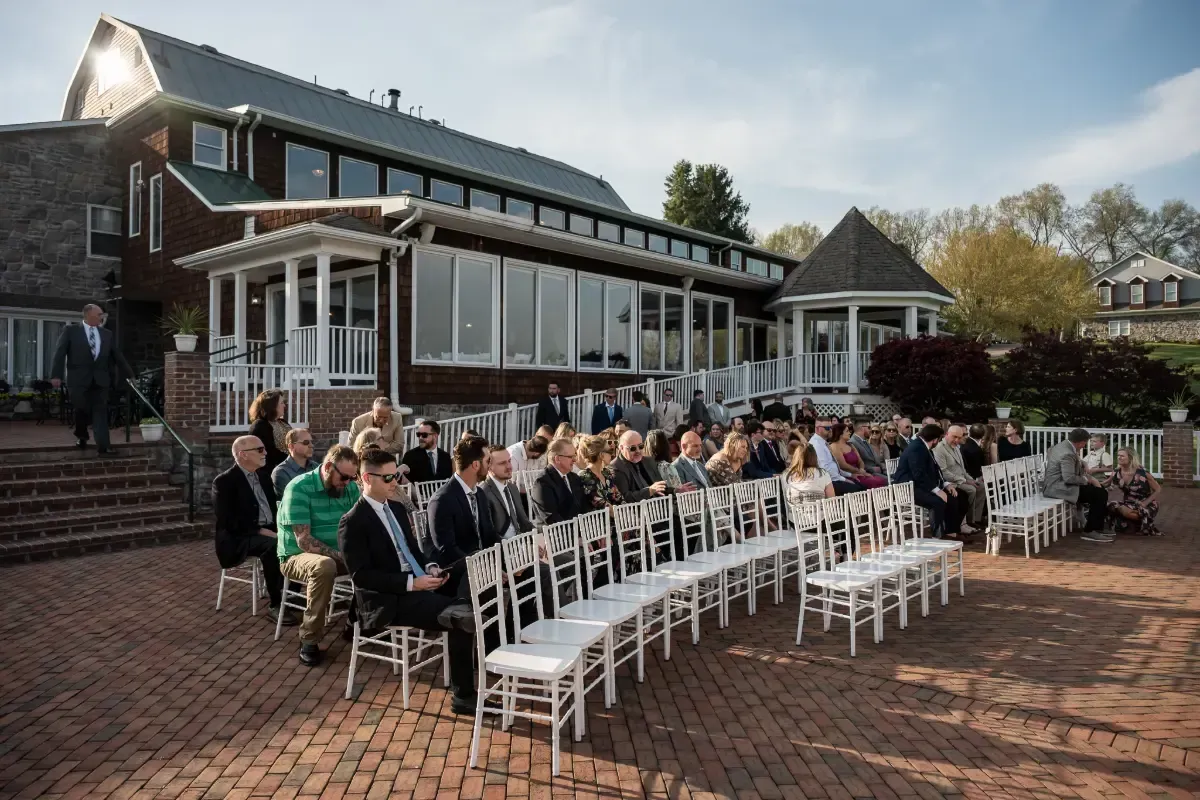
The Ultimate Guide to Wedding Processional Order: Morningside Inn Expert Advice
Planning a wedding ceremony involves many moving parts, but one of the most symbolic and visually memorable moments is the processional. The wedding processional order sets the tone for your ceremony, reflecting your traditions, personal preferences, and family dynamics. Whether you're hosting a formal religious service or a laid-back outdoor celebration, getting the order right ensures a smooth, meaningful start to your big day.
This in-depth guide covers traditional and modern processional orders for different types of ceremonies, tips for customization, and how to coordinate the entire lineup seamlessly.
What Is a Wedding Processional?
The wedding processional is the formal entrance of the wedding party down the aisle, leading up to the ceremony. It typically begins with the officiant and ends with the bride’s entrance. This ceremonial walk symbolizes the transition from single life to married life and is often accompanied by music that builds anticipation and emotion.

Traditional Christian Wedding Processional Order
A traditional processional order, particularly for Christian weddings, follows a specific hierarchy of entrance. Here’s how it usually goes:
1. Officiant
The officiant often enters first and takes their place at the altar before the rest of the processional begins.
2. Grandparents of the Couple
Seated at the beginning of the ceremony, usually escorted by ushers or family members.
3. Parents of the Groom
The groom’s parents are typically seated before the bride’s family, symbolizing the welcoming of the bride into the groom's family.
4. Mother of the Bride
Seated last among the parents. Her entrance traditionally signals the start of the ceremony.
5. Groom
The groom may walk down the aisle solo, with both parents, or enter from the side after the officiant.
6. Groomsmen
Enter in pairs or singly and line up beside the groom at the altar. Usually the groomsmen will walk on the outside of the aisle.
7. Bridesmaids
Walk down the aisle one by one or in pairs and line up opposite the groomsmen.
8. Maid or Matron of Honor
The bride’s chief attendant walks alone and holds the bride's bouquet during the ceremony.
9. Ring Bearer
Carries symbolic rings (often fake for younger children) and walks down before the flower girl.
10. Flower Girl
Scatters petals or simply walks ahead of the bride, signaling her grand entrance.
11. Bride and Escort (Usually Father of the Bride)
The bride traditionally walks last, escorted by a parent or significant person in her life.

Jewish Wedding Processional Order
In Jewish ceremonies, the order differs slightly and includes both sets of parents walking with their children. Here's the traditional setup:
Rabbi and/or Cantor
Grandparents
Groom with Parents (Mother on Right Arm, Father on Left)
Best Man & Groomsmen
Maid of Honor & Bridesmaids
Ring Bearer and Flower Girl
Bride with Parents (Mother on Right Arm, Father on Left)
This order highlights the importance of family in Jewish culture and tradition.

Hindu Wedding Processional Order (Baraat and Milni)
In Hindu weddings, the processional is a vibrant and elaborate part of the celebration. It typically includes two main elements: the Baraat (groom’s arrival) and the Milni (welcoming ceremony), followed by the bride’s entrance.
1. The Baraat (Groom’s Wedding Procession)
The groom arrives at the wedding venue on a decorated horse, elephant, or car, accompanied by music, dancing, and family members.
This celebratory procession symbolizes the groom’s journey to claim his bride and begin his new life.
Family members, friends, and a band or DJ often accompany him, dancing in a joyful parade.
2. The Milni (Welcoming of the Groom's Family)
Upon arrival, the bride’s family greets the groom’s family at the entrance.
Elders from both families exchange garlands and blessings in a ritual called the Milni, symbolizing unity and mutual respect.
After this ceremony, the groom proceeds to the mandap (wedding altar) for the main ceremony.
3. Groom’s Entrance to the Mandap
The groom is often escorted by his parents or male relatives to the mandap.
A brief ceremony called Madhuparka may take place, where the bride’s father welcomes the groom.
4. Bridal Procession
The bride’s entrance varies by regional tradition:
In North Indian weddings, she is escorted by her maternal uncle(s), brothers, or close male relatives.
In South Indian weddings, she may enter with her parents or be led by female relatives.
Brides are often carried in a palki (palanquin) or walk under a phoolon ki chadar (canopy of flowers held by family members).
5. Kanyadaan (Giving Away the Bride)
The bride’s father places her hand into the groom’s during the kanyadaan ritual, symbolizing the transfer of responsibility and blessings.
Note: Hindu wedding processions are rich in symbolism, colors, and rituals. The specific order may vary based on regional customs (e.g., Punjabi, Tamil, Bengali, Gujarati) and family traditions.

Non-Traditional or Modern Wedding Processional Order
Couples today often customize the processional to reflect their values and preferences. Here are a few modern variations:
Option 1: Couples Walk Together
Instead of being escorted, both the bride and groom can walk down the aisle hand-in-hand, symbolizing partnership.
Option 2: No Gender Rules
Bridesmaids and groomsmen can be mixed and matched, with "bridesmates" or "groomsmaids" walking together.
Option 3: Solo Entrances
Each member of the wedding party may enter individually to highlight their unique role in the couple’s life.
Option 4: Parents of Both Partners Walk Together
A more inclusive and balanced approach for blended or non-traditional families.
LGBTQ+ Wedding Processional Ideas
For LGBTQ+ couples, there are no rules—just possibilities. Here are some inclusive ideas:
Each partner can have their own processional.
Both partners walk in together, either alone or with family members.
Mixed wedding parties walk in together with no gender separation.
Combine traditions from both families’ cultural or religious backgrounds.
Tips for a Smooth Processional
1. Rehearse the Order
A wedding rehearsal is essential. Walk through the timing, spacing, and cues for music changes.
2. Use Music Strategically
Choose songs that build anticipation. A new song for the bride’s entrance helps signal the shift in energy.
3. Assign a Coordinator
Your wedding planner or day-of coordinator should cue each person’s entrance and ensure everyone is in position. Morningside Inn provides a day-of coordinator for the rehearsal and your wedding day.
4. Consider Physical Needs
Make accommodations for elderly family members or children who might need help walking down the aisle.
5. Keep It Personal
Infuse meaning into your processional. Add cultural elements, choose meaningful music, or change up the order to reflect your story.
Sample Processional Order Chart
Here's a simple visual breakdown of a traditional Christian wedding processional:

Final Thoughts
The wedding processional is more than a formality—it’s a deeply personal and symbolic part of your ceremony. Whether you follow a centuries-old tradition or craft a walk that’s uniquely yours, understanding the roles, options, and symbolism can help you create a moment that’s memorable, smooth, and true to your story.
Ready to bring your wedding vision to life with a ceremony that reflects your unique love story? At Morningside Inn, our all-inclusive wedding packages and scenic venue spaces provide the perfect setting for every moment—from your processional to the last dance. Explore how we make planning simple, seamless, and unforgettable.




